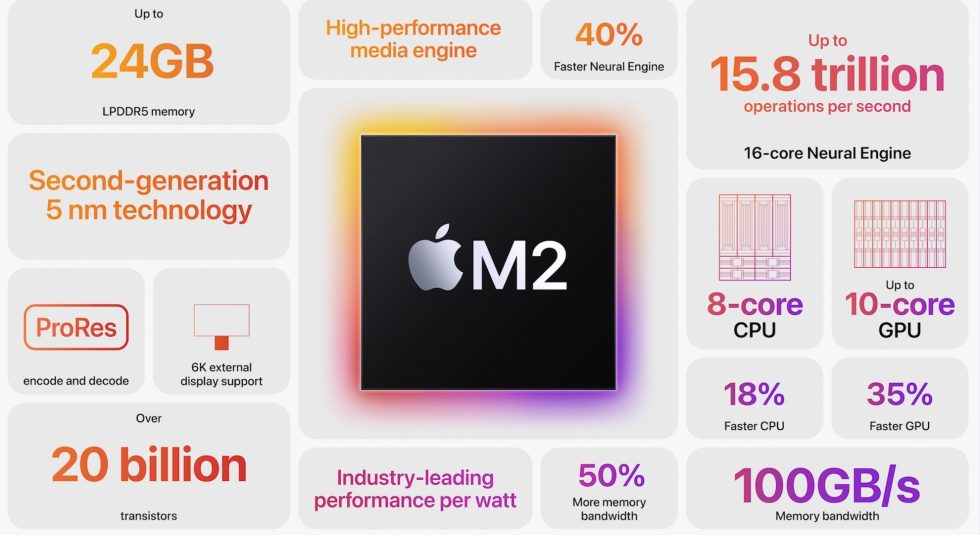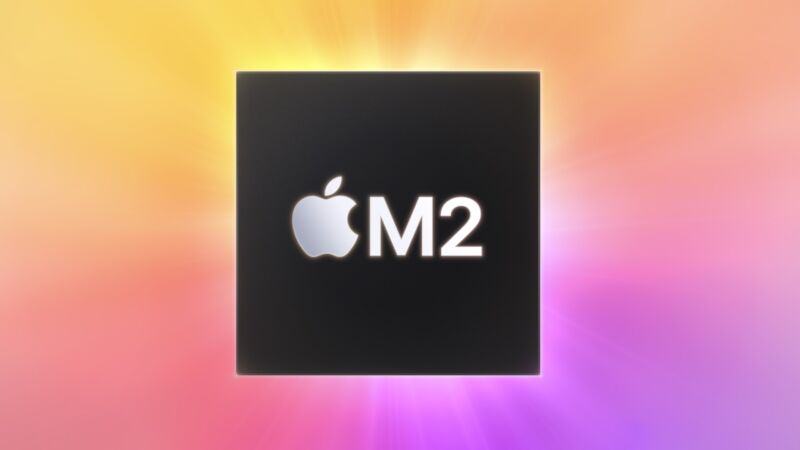CUPERTINO, Calif.—Exactly two years after Apple first announced the M1, its direct successor has finally been revealed. Apple executives and product managers presented details about the new chip—predictably dubbed the M2—during its annual developer conference.
The M2 is an improvement in many ways on the M1, but it's not meant to one-up the higher-end M1 Pro, M1 Max, or M1 Ultra seen in the MacBook Pro and Mac Studio. M2 Pro, Max, and Ultra variants have higher CPU and GPU core counts that will still outspeed the M2's performance improvements.
Like its predecessor, the M2 has eight CPU cores—four high-performance cores and four low-power efficiency cores. Apple says it will perform about 18 percent faster than the M1's CPU It also bumps the GPU cores from eight to 10, providing a 35 percent performance boost, though as with M1 we may see multiple versions of the M2 chip that ship with different numbers of GPU cores.

Apple says that the M2 uses 20 billion transistors, a 25 percent increase from M1, and that it boasts 100GB/s of memory bandwidth; this should benefit integrated GPU performance, among other tasks. The processor is still built on a 5nm manufacturing process, the same as M1. The chip will also support as much as 24GB of memory, up from M1's 16GB limit.
Apple also says the M2 features a faster Neural Engine that runs 40 percent faster than the version in M1, H.264 and HEVC hardware decoding support at resolutions up to 8K, a ProRes video engine that can play multiple 4K and 8K video streams at the same time, and an improved image signal processor (ISP) that should improve noise reduction for the webcam. However, like the M1, the M2 can still only handle a total of two displays—the laptop's internal screen, if it's being used in a laptop, plus an up-to-6K external monitor. If you want to drive more monitors, you'll still need a Pro, Max, or Ultra SoC.
The first Macs to ship with the M2 chip are an all-new redesigned MacBook Air, plus a new 13-inch MacBook Pro that uses the same design as the M1 version (and the last few Intel MacBook Pros, to boot).



3175x175(CURRENT).thumb.jpg.b05acc060982b36f5891ba728e6d953c.jpg)

Recommended Comments
There are no comments to display.
Join the conversation
You can post now and register later. If you have an account, sign in now to post with your account.
Note: Your post will require moderator approval before it will be visible.